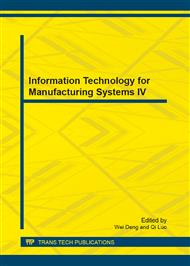p.3
p.10
p.16
p.23
p.29
p.34
p.40
p.46
The Material Nonlinear Analysis of Bioprosthetic Heart Valve on Suture Densities
Abstract:
In order to investigate the effect of suture density on the dynamic behavior of bioprosthetic heart valve with nonlinear material and improve long term durability of bioprosthetic heart valve, we establish the ellipsoidal leaflets and paraboloidal leaflets models via computer aided design. Based on the parametric models of the heart valve, four kinds of suture density (100,70,50 and 35 suture points on the attachment edge of the bioprosthetic heart valve) are analyzed by using finite element method. The finite element analysis results are compared with each valve model. It shows that suture density has a significant effect on the dynamic behavior of the bioprosthetic heart valve, which lead to different stress peak values, different stress distributions and deformation. The finite element analysis of the BHV could provide direct and useful information for the BHV designer.
Info:
Periodical:
Pages:
23-28
Citation:
Online since:
September 2013
Price:
Сopyright:
© 2013 Trans Tech Publications Ltd. All Rights Reserved
Share:
Citation:


